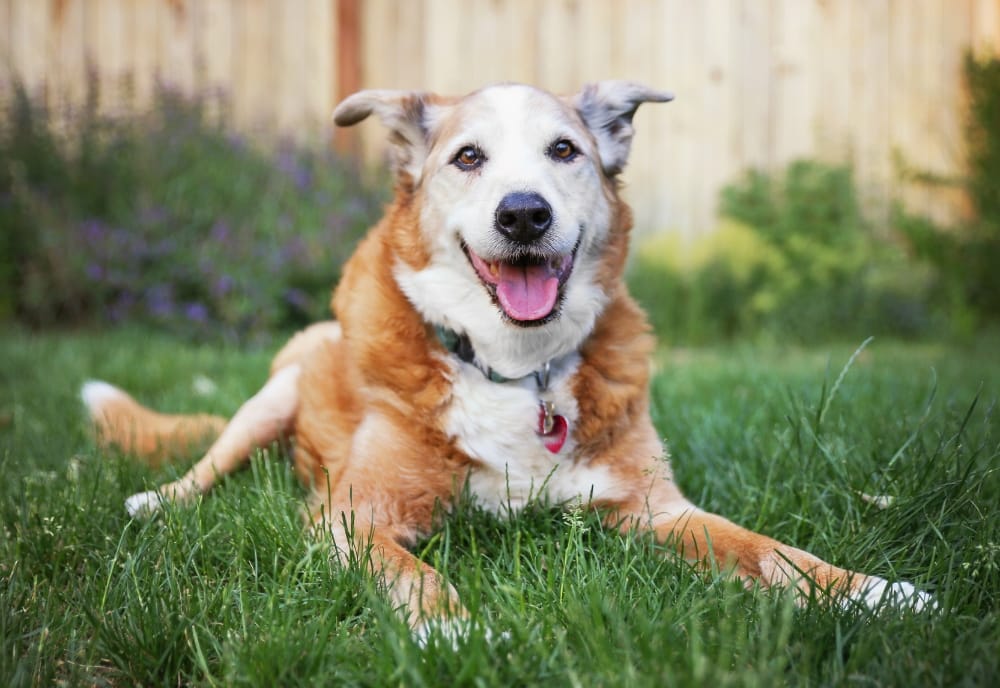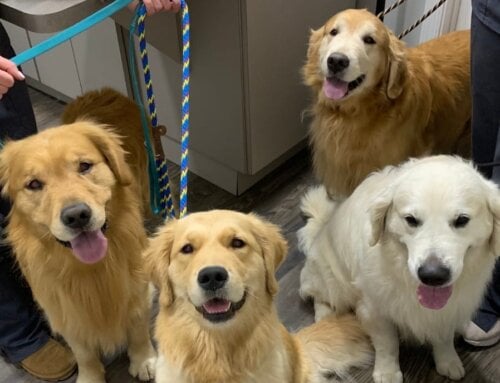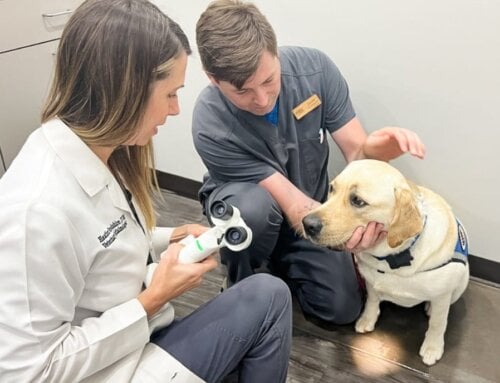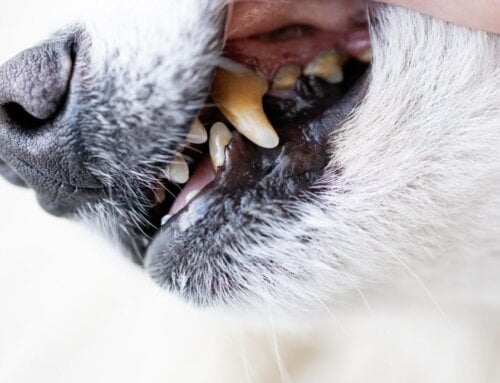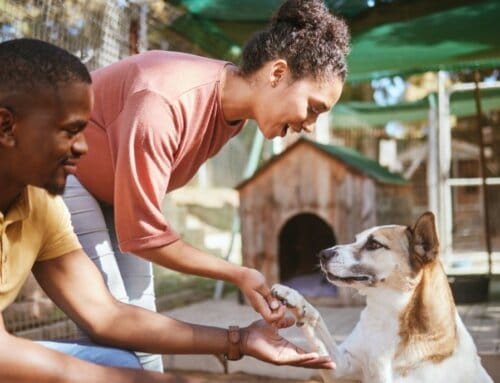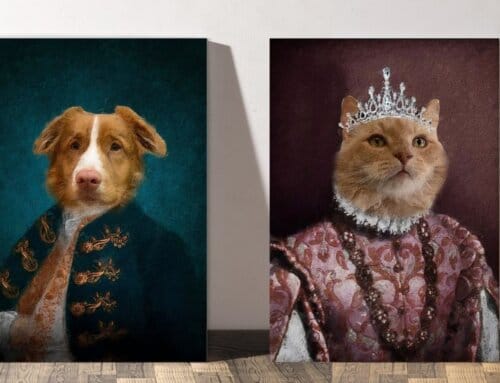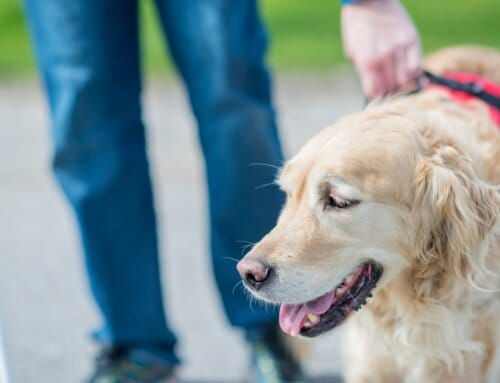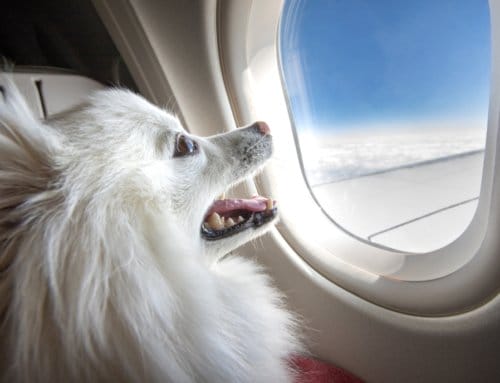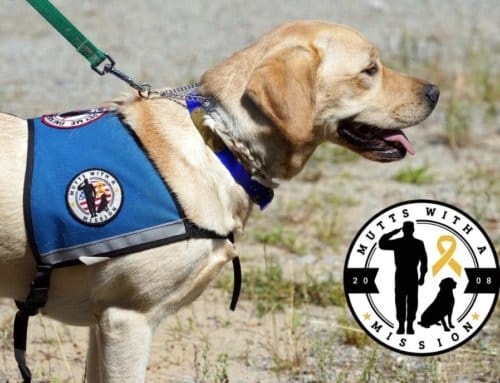Just like human eyes, dogs’ eyes change as they age. These changes can be concerning for pet parents when they see a difference in the appearance of their dogs’ eyes. Or, if they notice other signs, such as squinting, scratching or pawing at the eye and bumping into objects at home. In Focus caught up with Dr. Heather Brookshire, who shared details about cataracts and other eye issues that often affect senior dogs and the treatment options that are available. A board-certified veterinary ophthalmologist, she is the owner of Animal Vision Center of Virginia with two practices in Coastal Virginia.
Thanks to WAVY-TV for having Dr. Brookshire on the Hampton Roads Show! What a great opportunity to share details about cataracts and other common eye issues in senior dogs and the treatment options that are available.
Watch the Hampton Roads Show’s full segment featuring Tara Wheeler with Dr. Heather Brookshire here, press play on the embedded video, or read the Q&A recap below.
At what age is a dog considered a senior, and what are some of the common eye issues that canine pets may develop over time?
All dogs age more quickly than people do, but large dogs tend to age even more rapidly than their smaller counterparts. A very large dog could be considered a senior at 5 or 6 years of age, while a small dog may not be a senior until 10 to 12 years of age. The most common age-related eye diseases we see in our senior dogs include degenerative problems of the cornea (front of the eye), lens (cataract formation) or the retina (back of the eye). Many of these conditions are treatable, if managed by a veterinary ophthalmologist.
What treatment options are available?
The most treatable age-related eye condition is cataracts. Just like in people, cataracts form relatively commonly in older dogs and can be removed to restore their sight with cataract surgery. Corneal degeneration, a gradual deterioration of the tissue of the cornea, can be managed with medical therapy or with minor procedures when it becomes more advanced. And retinal degeneration can be slowed with the help of ocular supplements.
Tell us more about cataract surgery for pets?
Cataract surgery in dogs is similar to cataract surgery in people. We make a small incision at the top part of the eye. Then we use tiny instruments to go inside the eye and create a small circular hole within the outer flexible capsule of the lens. We then use ultrasound energy to remove the internal cloudy lens material. The capsule is then polished, an artificial lens is implanted and the incision at the top of the eye is closed with suture. The surgery itself is quick and relatively painless, and older dogs tend to do just as well as younger ones with the lighter levels of anesthesia that are used. The success rate of cataract surgery is quite high, with greater than 95% of cases undergoing a successful procedure and having improved vision following surgery.
What are the signs that your older pet may have an eye problem?
The same clinical signs of ocular disease apply to dogs of any age. These include increased redness or swelling of the tissues around the eye; increased discharge around the eyes; cloudiness, squinting, or holding the eyes closed; and scratching or pawing at the eye. You may also notice decreased vision in general or they may be bumping into objects at home.
We understand that Animal Vision Center of Virginia is offering free eye screenings for newly adopted pets in the Hampton Roads area as part of “Clear the Shelters Month” in August.
Yes, we are offering a free eye health screening for pets that are adopted in August in our region to support “Clear the Shelters Month.” Once you have adopted your pet—preferably an older dog!—you can call us at 757-749-4838 by Aug. 31 to schedule the appointment. Just bring your adoption papers with you, and we will we will conduct the evaluation at no cost.
We love working with our local shelters, and this is a wonderful way for us to make sure adopted pets have a good start with great eye health!
Find out more about Animal Vision Center of Virginia in this interview on WAVY-TV’s “Hampton Roads Show.”
Providing quality ophthalmic care for animals of all shapes and sizes, Animal Vision Center of Virginia has practices in Chesapeake at 228 Mt. Pleasant Road and in Virginia Beach at 501 Constitution Drive. Their care team is dedicated to providing the highest level of technology, education, skill and compassion, from consultation to complete ophthalmic services.
